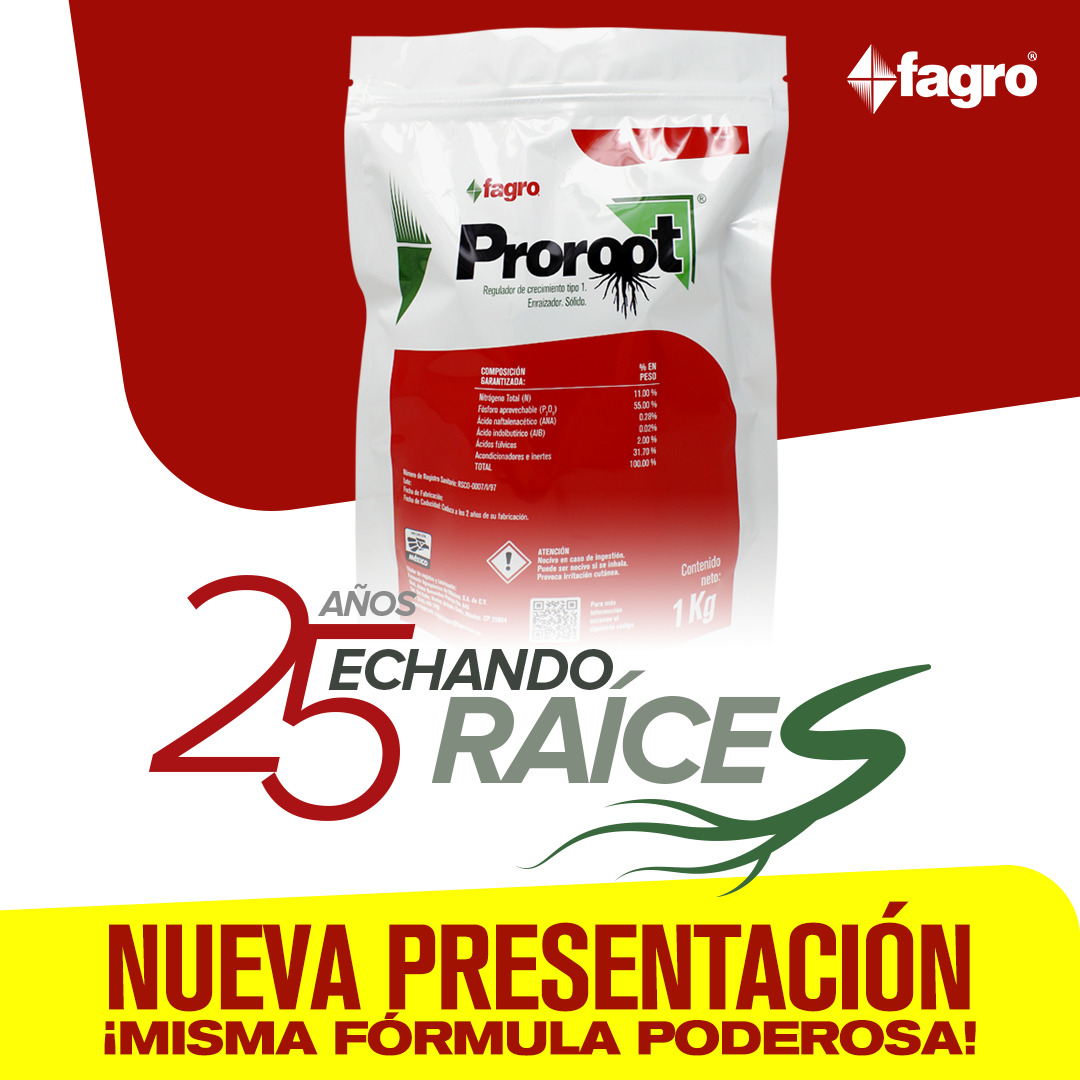Rooting is one of the most important facets in crop development. The root is the organ of plants that is responsible for fixing to the soil, absorbing water and nutrients and exuding compounds with which the plant interacts with other organisms and microorganisms in the soil and sometimes the root reaches function as a release valve for high-grade compounds that are toxic to the plant.
This is where the importance of stimulating the correct development of this part of the plant lies, and for this, just over 25 years ago, Grupo Fagro developed Proroot, a growth regulator and fertilizer designed precisely to develop both primary and secondary roots. Its formulation has 3 very important elements:
- An Auxin with a natural structure: Indolebutyric Acid (IBA) is a natural auxin, found in plants, it stimulates the development of main roots and is rapidly absorbed into plant tissues.
- A synthetic Auxin: Naphthaleneacetic Acid (NAA) is a highly stable growth regulator auxin of synthetic origin, with a longer-lasting effect on secondary roots or absorbent hairs.
- Nutritional Base: (Nitrogen, Phosphorus and Fulvic Acid) provides energy and elements necessary for the correct assimilation of the formula and the raw material so that the “signal” that the auxins give to the plant, lowers energy levels or hormonally unbalances to the plant.
For this reason, Proroot promotes the development of practically all crops, both grown in soil, as in hydroponics and in a diversity of climates and types of management. Proroot has the following advantages:
- Used at recommended doses, it does not cause phytotoxicity or stress in plants.
- It can be applied from the seedling phase, from the moment the seedling emerges, later it can be applied in transplantation, in vegetative development and in pre-flowering.
- Can be mixed with most crop inputs.
- It has a great effect from low doses, which allows savings compared to other rooters, with a low cost per piece, but with a high dose.
- Once applied correctly, it quickly induces rooting, and it is an effect that lasts for more days.
- Strengthens the development of stems, branches and in general of the aerial part of the crop.
- Improves the caliber of seedlings.
- It helps the post-transplant stress stages to affect the newly transplanted plant less.

